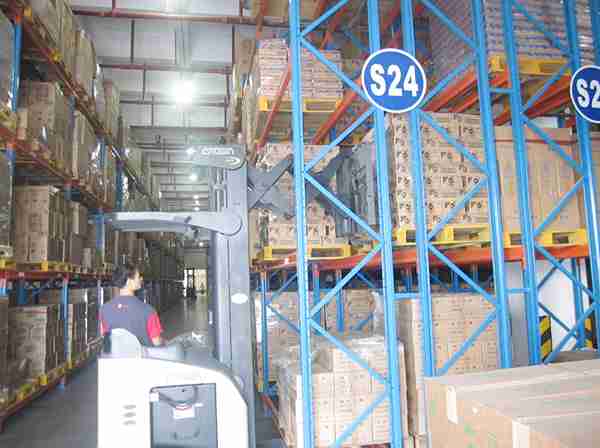📐 "First 50 Enterprise Queries Get Custom 3D Warehouse Design" Plan

The Strategic Power of High-Density Storage
For logistics managers and warehouse operators across Southeast Asia, the Middle East, Africa, and Latin America, the relentless pressure to reduce overhead while expanding capacity defines daily operational challenges. The traditional solution of facility expansion is increasingly untenable, burdened by soaring real estate costs and lengthy construction timelines. A superior strategy lies in radical spatial optimization through double deep storage solutions. This technology represents a paradigm shift in warehouse design, systematically unlocking latent cubic space to deliver profound double deep storage cost savings.
By implementing a double deep storage system, forward-thinking companies routinely achieve cost savings exceeding 40%, not merely from reduced footprint requirements but from a cascade of efficiencies in material handling, energy use, and labor productivity. This authoritative guide, drawing upon decades of field implementation, will detail the engineering principles, financial models, and operational best practices that make double deep storage cost savings a predictable and sustainable outcome for businesses aiming to dominate their regional markets.

1. The Global Warehousing Dilemma: Space Scarcity and Rising Costs
1.1 The Economic Imperative for Density
In emerging markets from Jakarta to Johannesburg, Monterrey to Dubai, industrial land values are climbing at a precipitous rate. The cost of constructing new warehouse facilities has escalated due to material inflation and regulatory complexities. Concurrently, consumer and B2B demand for rapid, reliable delivery compresses supply chain timelines. This confluence of factors creates a powerful economic imperative: maximize storage density within existing walls. Conventional selective racking, with its generous aisles for forklift access, frequently utilizes less than 45% of a facility’s total cubic volume. This waste is a direct, recurring financial drain, making the pursuit of double deep storage cost savings not just an operational tweak, but a critical strategic initiative for financial health and competitive agility.
1.2 The Compound Cost of Inefficient Layout
The financial impact of poor storage density extends far beyond monthly lease payments. It creates a compound inefficiency that erodes profitability:
Excessive Material Handling Travel: Operators in a spread-out facility spend a disproportionate amount of time traveling empty, increasing cycle times and reducing picks per hour. This directly inflates labor costs and equipment depreciation.
Energy Inefficiency: Lighting, heating, and cooling a vast, partially empty space constitutes a significant and avoidable operational expenditure. Larger footprints equal higher utility bills.
Management Overhead: Sparse storage layouts complicate inventory control, increase walking distances for cycle counts, and often lead to poorer space utilization discipline among floor staff.
The strategic adoption of double deep storage systems directly attacks these cost centers. The double deep storage cost savings model proves that the most effective way to cut costs is often to eliminate the need for space itself.
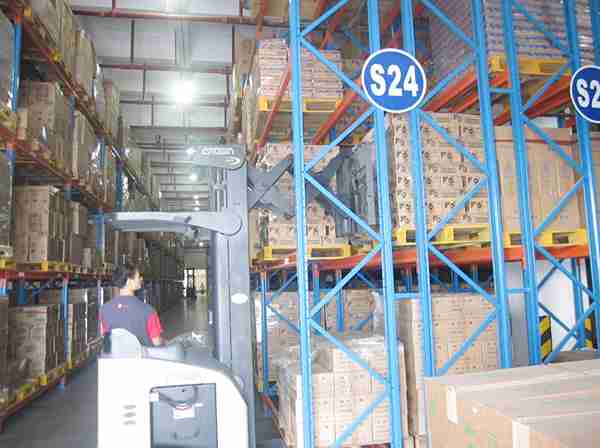
2. Deconstructing Double Deep Storage: The Engineering of Efficiency
2.1 Core Operational Mechanics
A double deep pallet racking system is engineered for high-density storage by placing pallets two units deep in a single rack bay, accessed from a single aisle. This configuration fundamentally contrasts with single-deep selective racking. The system relies on specialized double reach forklifts or deep-reach AGVs equipped with telescoping forks that can extend past the first pallet to engage and retrieve the second. This simple yet profound design alteration—storing in depth rather than width—can reduce total aisle count by approximately 50% for the same storage capacity. For a business, this translates directly into the first major component of double deep storage cost savings: the dramatic increase in storage positions per square meter of floor space.
2.2 System Components and Their Role in Reliability
The durability and performance of the system hinge on its components:
Heavy-Duty Structural Framework: Upright frames and beams are designed with higher load capacities and superior resistance to lateral forces compared to standard racking. This ensures stability when the deep-reach truck operates within the lane, a non-negotiable requirement for safety and long-term cost savings.
Precision Guide Rails and Lane Dividers: These are not optional accessories but critical safety and performance elements. They ensure pallets remain perfectly aligned on their storage rails, preventing the rear pallet from shifting or becoming jammed. This precision is essential for achieving the fast, smooth cycles that underpin the operational double deep storage cost savings.
Specialized Material Handling Equipment (MHE): The double reach truck is the heartbeat of the system. Its unique pantograph mechanism allows the forks to extend while the mast remains vertical, enabling operation in aisles as narrow as 2.7 meters. The investment in this equipment is a pivotal part of the capital outlay, but its efficiency gains are the engine of ongoing double deep storage cost savings.
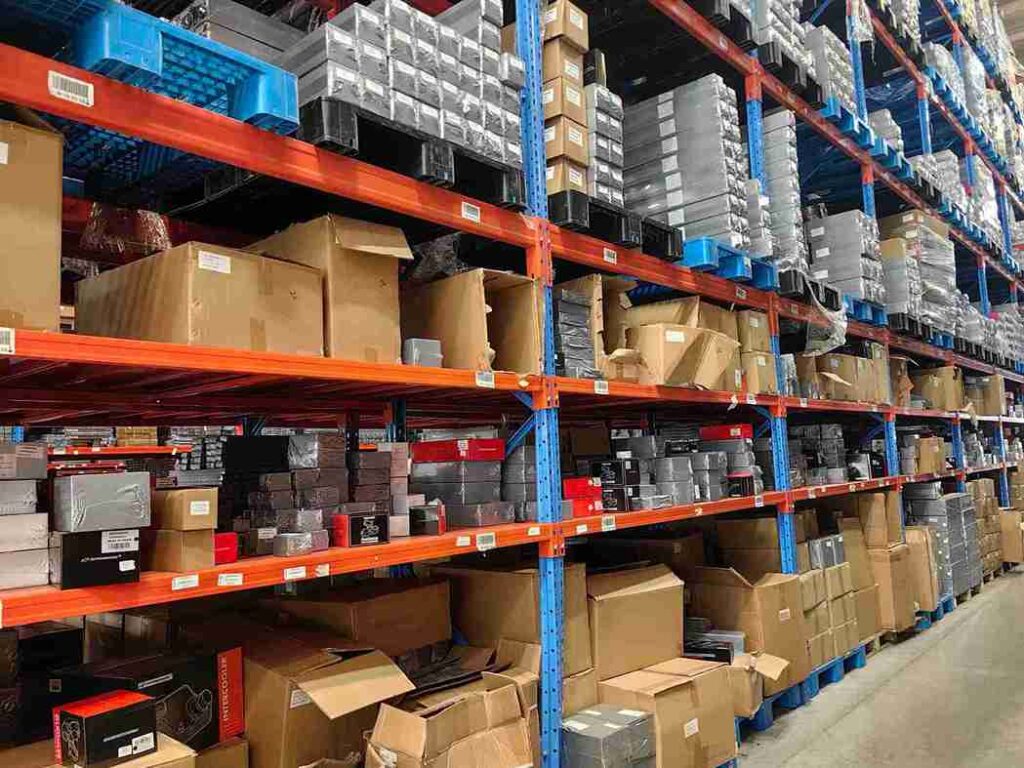
3. The Financial Blueprint: Quantifying the 40%+ Savings
3.1 The Real Estate Multiplier Effect
The most immediate and calculable double deep storage cost savings comes from real estate optimization. Consider a practical example: A warehouse operating at capacity with 8,000 pallet positions in single-deep racking. By converting to a double deep storage layout, the same floor area can typically accommodate 12,000 to 14,000 positions—a 50-75% increase. For a company facing a need for 14,000 positions, the choice is stark: lease and fit out an additional 40% more building space, or reconfigure the existing facility. The double deep storage cost savings here include 100% of the avoided additional rent, property taxes, insurance, and utilities for that new space. In major logistics hubs, this can represent annual savings running into hundreds of thousands of dollars.
3.2 Operational Expenditure (OPEX) Compression
The double deep storage cost savings multiply when analyzing day-to-day operations:
Reduced Travel Distance: With up to 50% fewer aisles, the average travel distance for put-away and retrieval can drop by 30-40%. This reduces forklift energy consumption (electricity or propane) by a comparable margin and increases the number of productive cycles per shift. This direct link between density and productivity is a cornerstone of operational double deep storage cost savings.
Lower Fleet Capital and Maintenance Costs: Higher productivity per truck can delay or eliminate the need for additional forklift purchases. Reduced travel also means less wear on tires, motors, and hydraulics, extending service intervals and lowering the total cost of ownership—another tangible layer of double deep storage cost savings.
Optimized Labor Deployment: The productivity gain allows existing staff to handle greater throughput. This double deep storage cost savings factor can either forestall hiring in a growth scenario or enable the reallocation of labor to value-added tasks like quality control or advanced picking, improving overall warehouse economics.
3.3 Total Cost of Ownership (TCO): A Long-Term View
A superficial analysis might focus on the higher upfront cost of double deep racking and specialized MHE. However, a professional TCO analysis over a 7-10 year horizon reveals the undeniable truth. The capital expenditure is quickly amortized by the massive, recurring double deep storage cost savings in real estate and OPEX. Industry benchmarks consistently show a payback period of 18-30 months, after which the double deep storage cost savings flow directly to the bottom line. This powerful financial narrative makes the case for double deep storage as a capital investment with an exceptional, risk-adjusted return.
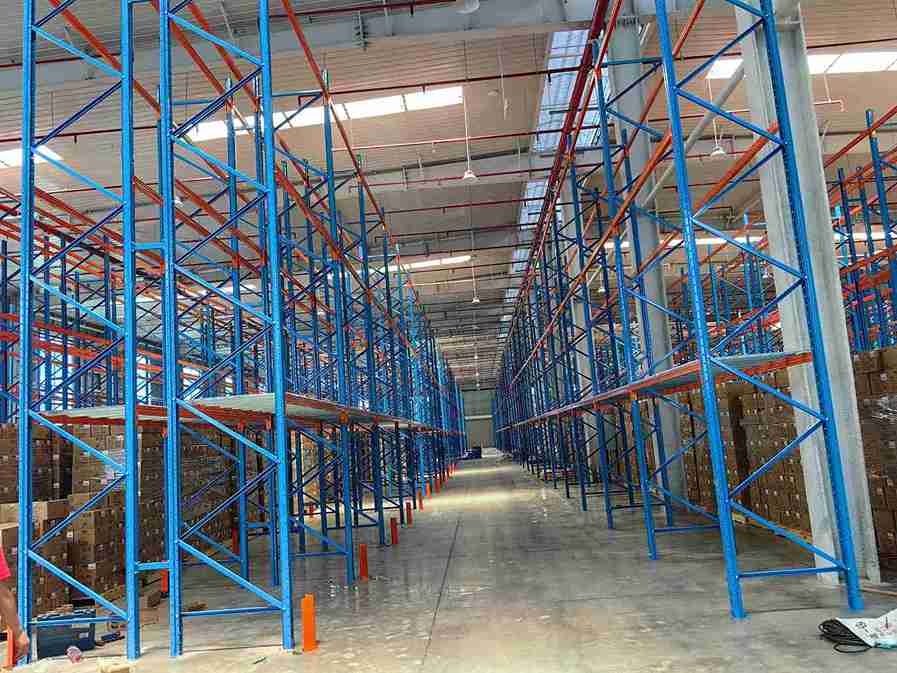
4. Synergy with Automation: Amplifying the Savings
4.1 The Automated High-Density Warehouse
Double deep storage is not a standalone solution but a foundational element of modern warehouse automation. Its integration creates a multiplicative effect on double deep storage cost savings:
Double Deep AS/RS: Automated Storage and Retrieval Systems configured in a double-deep layout achieve phenomenal density. The computer-controlled crane performs the deep-reach function with precision, enabling 24/7 operation in near-darkness, adding further cost savings in energy and labor.
AGV/AMR Integration: Fleet of Automated Guided Vehicles or Autonomous Mobile Robots can be deployed with deep-reach attachments. These systems turn the double deep storage area into a fully dynamic, goods-to-person zone, minimizing human travel and maximizing pick rates. The reliability and predictability of robots further enhance the double deep storage cost savings by reducing errors and damage.
Streamlined Conveyor Networks: By consolidating storage, the distance goods must travel via conveyor to sortation and dispatch zones is reduced. This lowers capital cost for conveyor installation and yields ongoing double deep storage cost savings in motor energy consumption and maintenance.
4.2 The Indispensable Role of Intelligent Software
The hardware’s potential is unlocked only by sophisticated software. A Warehouse Management System (WMS) capable of managing double deep storage is mandatory. It must execute complex slotting logic, manage strict FIFO/LIFO discipline, and minimize the “honeycombing” effect of empty front positions. Advanced systems use predictive analytics to position stock based on forecasted demand, ensuring fast-moving SKUs are accessible. This software layer is critical for realizing the full spectrum of double deep storage cost savings and operational fluidity.
5. Sector-Specific Applications: Where Savings Are Realized
5.1 FMCG and Beverage Distribution in Hot Climates
In the high-volume, fast-paced FMCG sectors of Southeast Asia and the Gulf, SKU counts are high, and turnover is rapid. A major soft drink bottler in the Philippines, facing chronic space shortages, implemented a double deep storage solution. The project yielded a 65% increase in pallet positions, allowing them to service a larger region from a single hub. The resultant double deep storage cost savings from avoided satellite warehouse leases and reduced cross-town transportation solidified their market leadership and dramatically improved margin.
5.2 Cold Chain Logistics: Where Density Equals Direct Energy Savings
For cold storage operators in the Middle East and Latin America, energy is the single largest operating cost. Chilling empty space is financially draining. A frozen food logistics provider in Qatar implemented a double deep storage system in their -25°C freezer. The 50% gain in pallet density meant they were chilling 50% more product with the same refrigeration load. The double deep storage cost savings in electricity consumption alone justified the investment in under three years, while also deferring a multi-million-dollar facility expansion.
5.3 Manufacturing and Raw Material Buffering
Manufacturers, from automotive in South Africa to packaging in Mexico, often dedicate vast floor space to raw material and work-in-progress (WIP) storage. These items are typically uniform and suited to deep storage. By implementing double deep storage for these materials, a Nigerian appliance manufacturer freed up 35% of their production floor area. This space was converted into an additional assembly line, directly increasing output and revenue—a transformative double deep storage cost savings story that went beyond logistics into core production capacity.
6. Implementation: A Phased Approach to Guaranteed Savings
6.1 Feasibility and Profile Analysis
Achieving the promised double deep storage cost savings begins with a rigorous feasibility study. The ideal candidate profile includes:
High pallet volume per SKU, ensuring deep lanes are fully utilized.
Strong inventory control capable of supporting FIFO or LIFO discipline.
Adequate building clear height to capitalize on vertical space reclaimed from aisle reduction.
Floor flatness within a 3mm tolerance over 3 meters to ensure smooth deep-reach operation.
A detailed analysis of inventory velocity (ABC analysis) is conducted to slot products correctly, ensuring fast movers are positioned for optimal access—a key step in maximizing double deep storage cost savings.
6.2 Safety Integration and Competency Training
The double deep storage cost savings model cannot compromise on safety. The operational environment has unique risks:
Comprehensive Operator Certification: Training goes beyond standard forklift licensing. It includes specific modules on load handling in deep lanes, blind-retrieval techniques, and strict lane-entry protocols.
Enhanced Site Safety Systems: Visual and auditory warning systems for occupied lanes, coupled with robust rack protection posts (RPPs), are installed to prevent collisions and damage.
Preventive Maintenance Culture: Scheduled, documented inspections of rack integrity, guide rail alignment, and forklift fork condition are institutionalized to prevent failures that could interrupt operations and erode double deep storage cost savings.
7. Advanced Configurations: Beyond Double Deep
7.1 Push-Back Racking and Drive-In Systems
For operations where the double deep storage cost savings model is compelling but SKU variety is even lower, deeper systems offer greater density. Push-back racking (typically 3-5 deep) and drive-in racking offer the ultimate in space utilization for homogeneous products. The choice is a strategic calculation: deeper systems offer higher potential double deep storage cost savings on real estate but require more sophisticated MHE and impose stricter inventory management. The decision is guided by a detailed cost-benefit analysis of accessibility versus density.
8. The Future Trajectory: AI, Robotics, and Sustainable Savings
8.1 The Intelligent, Self-Optimizing Warehouse
The next evolution of double deep storage cost savings is driven by data and intelligence. Artificial Intelligence and Machine Learning are being integrated to create dynamic slotting systems. These AI engines analyze order patterns, seasonal trends, and product affinities in real-time, continuously re-optimizing the placement of pallets within the double deep storage matrix to minimize retrieval times and maximize throughput. This represents a leap from static efficiency to adaptive, predictive efficiency, unlocking new tiers of double deep storage cost savings.
8.2 Robotics and Lights-Out Operations
The integration of fully autonomous deep-reach robotic forklifts is progressing rapidly. These systems can operate safely in total darkness, alongside humans, or in fully sealed-off zones. They bring the promise of 24/7 operation with perfect consistency, further amplifying the labor and productivity components of double deep storage cost savings. The reliability of robotics also reduces product damage—a hidden but significant cost in manual operations.
8.3 Sustainability as a Core Saving
In an era of ESG (Environmental, Social, and Governance) focus, double deep storage is a powerful sustainability tool. By maximizing the use of existing assets, it reduces the need for new construction and the associated embodied carbon. The drastic reduction in forklift travel directly lowers the warehouse’s carbon footprint. For multinational corporations auditing their supply chains, a partner utilizing high-density storage demonstrates operational excellence and environmental responsibility, making double deep storage cost savings aligned with both profit and planet.
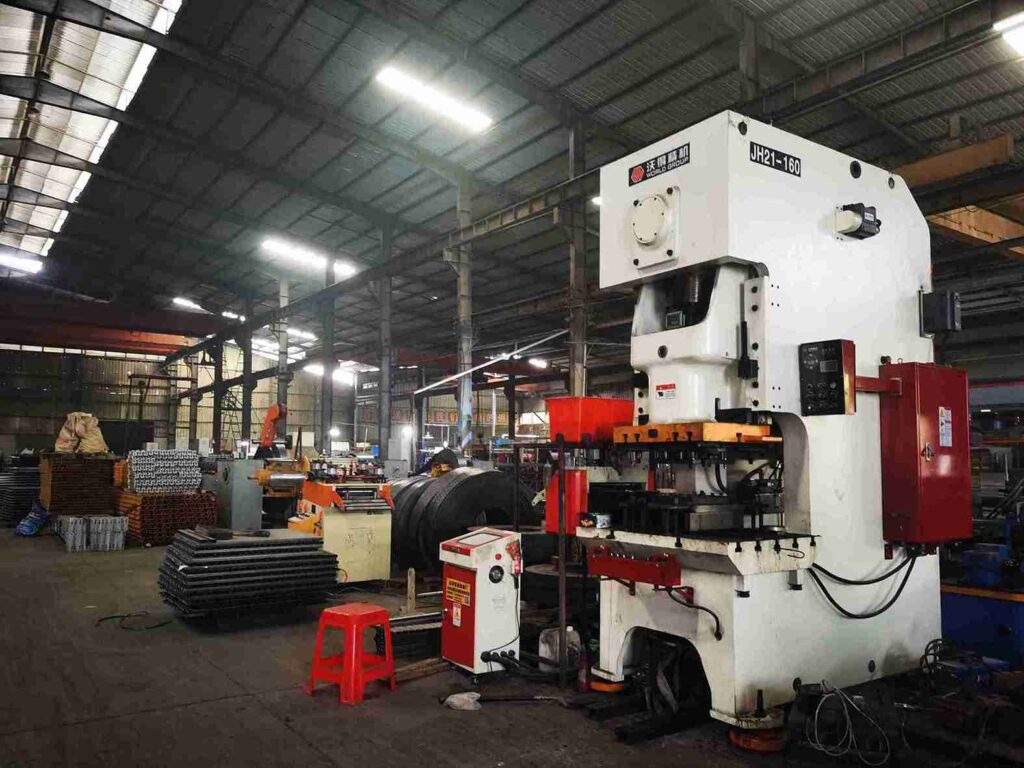
Conclusion: The Strategic Imperative of Density
For logistics and supply chain leaders operating in the dynamic but cost-sensitive markets of Southeast Asia, the Middle East, Africa, and Latin America, the equation is clear. Growth cannot be sustainably fueled by perpetual physical expansion. The path to resilience, profitability, and competitive advantage runs through the radical optimization of existing space. Double deep storage solutions offer a proven, engineered pathway to achieve this.
The comprehensive double deep storage cost savings—encompassing real estate, energy, labor, and equipment—are not theoretical but are being realized daily in warehouses across the globe. Implementing such a system is a declaration of operational sophistication, a commitment to financial discipline, and a strategic investment in a scalable future. The compelling evidence suggests that in the modern logistics landscape, depth is indeed the new breadth.
Frequently Asked Questions (FAQs)
1. How does double deep storage affect my inventory turnover (FIFO) requirements?
Double deep storage can perfectly support FIFO with proper Warehouse Management System (WMS) control and disciplined operations. The system is designed for lane-based management. To retrieve a rear pallet under FIFO, the front pallet (which arrived later) is temporarily relocated to another location (“reshuffled”) by the forklift. An advanced WMS will track this movement automatically and schedule reshuffling during low-activity periods to minimize productivity impact. The double deep storage cost savings from increased density often far outweigh the minor efficiency loss from occasional reshuffling, especially for SKUs with moderate to high turnover.
2. What is the typical lifespan of a double deep storage system, and how does maintenance impact the long-term savings?
A professionally engineered and installed double deep storage system, using high-quality galvanized steel, has a typical operational lifespan exceeding 25 years with proper care. The long-term double deep storage cost savings are heavily protected by a proactive maintenance regimen. This includes semi-annual rack inspections for alignment and damage, regular tightening of bolts (especially after initial settling), and immediate repair of any impacted uprights or beams. The specialized forklifts require adherence to manufacturer service schedules. This maintenance cost is a minor investment that safeguards the massive, multi-year stream of double deep storage cost savings by preventing catastrophic failure and ensuring consistent, efficient operation.
3. Can double deep storage be retrofitted into an existing warehouse with a low ceiling height?
Yes, retrofitting is common, but the approach to double deep storage cost savings differs in low-clearance buildings. While the primary saving from vertical space reclamation may be limited, the significant double deep storage cost savings from reducing aisle count and shortening travel paths remain fully achievable. The focus shifts from maximizing positions vertically to maximizing them horizontally within the existing envelope. A detailed planogram analysis will determine the optimal rack height and lane depth to maximize pallet positions and deliver the best possible double deep storage cost savings for that specific facility.
4. How does the cost of a double deep reach truck compare to a standard forklift, and what is the ROI on this equipment?
A double deep reach truck typically carries a 20-40% price premium over a standard reach truck of similar capacity. However, its ROI is calculated within the broader double deep storage cost savings ecosystem. This specialized equipment enables the entire high-density layout. The ROI is not based on the truck alone but on the total system savings it unlocks: the value of the avoided warehouse expansion, the reduced operational costs, and the productivity gains. When factored into the total project financial model, the ROI for the equipment is often under two years, as it is the essential tool for capturing the much larger real estate and operational double deep storage cost savings.
5. Are there specific types of pallets or loads that are not suitable for double deep storage?
Yes, load integrity is paramount. Non-standard, damaged, or loosely stacked pallets pose a significant risk in deep lanes, as they can become unstable or jammed. Pallets with overhang or irregular dimensions may not fit within the guide rails. The system works best with uniform, stable, well-built pallet loads. For industries with less uniform loads, a professional assessment is required. Part of achieving reliable double deep storage cost savings is establishing and enforcing strict pallet build and quality standards at the inbound receiving stage to ensure smooth, damage-free operation within the dense storage environment.
If you require perfect CAD drawings and quotes for warehouse racking, please contact us. We can provide you with free warehouse racking planning and design services and quotes. Our email address is: jili@geelyracks.com

